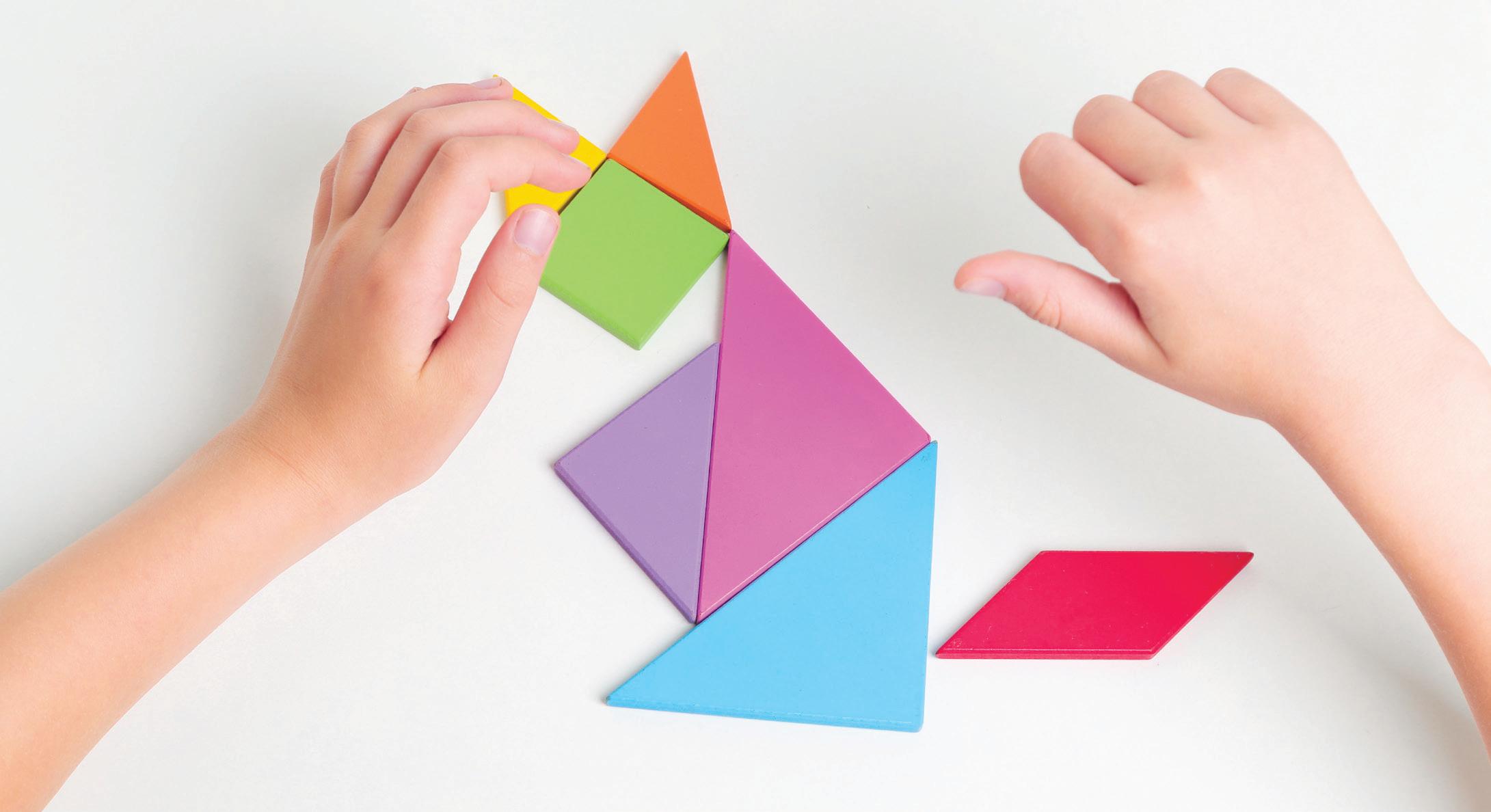
4 minute read
Keeping your hands on maths progression (Annie Facchinetti
Annie Facchinetti, Mathematics Educator, Our Lady Help of Christians Primary School
One of the many challenges associated with remote learning in 2020 and 2021 was the lack of access for students to resources. Of course, teachers, students and families used their ingenuity to get around this, from making Rube Goldberg machines from household items, to going on virtual voyages to faraway destinations. Despite our best efforts, though, there were some specialised materials that just weren’t able to be used during lockdown, and unfortunately maths is one of the areas that suffered most from this.
The benefits of using concrete materials
Many schools adapted to remote learning in maths by relying more on or switching to online platforms to cover much of the content. For students who love maths or who pick up the underlying concepts quickly, this was a good option. But there is strong evidence that the use of manipulatives is critical to developing understanding of the abstract thinking required for a variety of mathematical processes for many students. For example, a meta-analysis by Carbonneau, Marley and Selig (2013) found that across the board, from kindergarten to university, the use of concrete materials in the teaching of maths improved students’ understanding and also had a positive effect on problem solving and knowledge retention, among other things. Yet, there can be a tendency, especially as students move to the higher years of primary school and then to secondary school, to assume that they are no longer needed.
Maths anxiety
Maths is a subject that is well known for causing anxiety in children and adults alike. With research suggesting that between 6% and 17% of the population suffers from maths anxiety (Dowker, Sarkar & Looi, 2016), it is an issue that teachers need to be cognisant of, particularly as we seek to recover from interruptions to learning in 2020 and 2021. Using hands-on materials can give students confidence to explore maths problems without the fear of getting a written answer wrong, while also allowing them to build more solid understandings of the concepts they are working with. For example, students can model triangular numbers in their right-angled form using interlocking-cubes, then manipulate these representations to explore the relationships between triangular and square numbers. This is equally valuable for able students, who are often expected to grasp abstract concepts without the benefit of these experiences.
Differentiating needs for different students
A major advantage of using manipulatives from a pedagogical standpoint is that it is easy to quickly adjust an activity to differentiate for the needs of different students. In the example above, you could provide more explicit guidance for those struggling, and extend your capable students to consider the formula for finding the nth triangular number. This approach can be much kinder to students’ self-esteem than giving out worksheets or setting entirely different tasks for groups of students, as all students are still completing what is essentially the same task. Differentiating learning in mathematics has also been shown to be more effective than teaching all students against curriculum expectations (Masters, 2005). It is particularly important in addressing gaps in student understanding that may prevent them from mastering more abstract learning in the same area.
The importance of oral language
Back in 1970, James Britton observed that reading ‘floats on a sea of talk’. It’s a quotation that still resonates today and is often cited to highlight the importance of oral language to literacy learning. I would assert that it is equally important to making sense of and embedding many maths concepts. Using hands-on materials gives students the opportunity to interact with and articulate their learning in a way that paper and pen or online activities simply do not. It is particularly important to remember this as students transition from primary school, where they may be accustomed to using concrete materials frequently, to secondary school, where the expectations may be different.
The progression from concrete to abstract
Of course, ultimately, we want students to be proficient in mathematical thinking, problem solving, and understanding and executing mathematical processes without the use of manipulatives. But the progression from concrete to abstract needs to be carefully considered to ensure that students can explore and demonstrate their understanding in multiple ways. The judicious use of manipulatives right throughout school can be the difference between a lifelong feeling of confusion or inadequacy when it comes to maths, or the development of confidence and understanding as students move through school and into adulthood.
References
Britton, J., 1970, Language and Learning, Coral Gables, University of Miami Press, MIA, Florida
Carbonneau, K. J., Marley, S. C., & Selig, J. P., 2013, A metaanalysis of the efficacy of teaching mathematics with concrete manipulatives, Journal of Educational Psychology, vol. 105, no. 2, pp. 380–400, https://doi.org/10.1037/ a0031084
Dowker, A., Sarkar, A., & Looi, C. Y., 2016, Mathematics anxiety: What have we learned in 60 years? Frontiers in Psychology, vol. 7, article 508
Masters, G. N., 2005, Against the Grade: In Search of Continuity in Schooling and Learning, https://research.acer. edu.au/monitoring_learning/3
Pace, M. H. & Ortiz, E., 2015, Oral language needs: making math meaningful, Teaching Children Mathematics, vol. 21, no. 8, pp. 494-500, doi:10.5951/teacchilmath.21.8.0494
Annie Facchinetti
Annie Facchinetti is the Teaching and Learning Leader, Literacy Leader, and former Maths Leader at Our Lady Help of Christians School in Eltham. She is the lead author of Oxford Maths for Australian Schools and has presented about mathematics pedagogy and approaches at conferences around Australia. Annie has also recently completed a Master of Education in Allied School Psychology.







